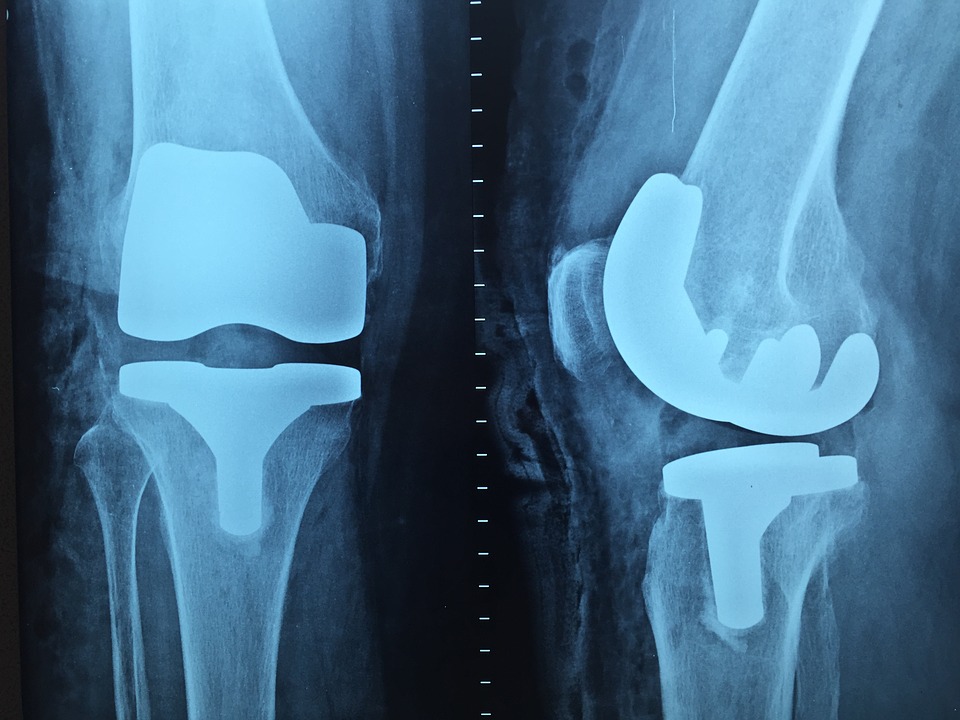If you’re a veteran in good standing of any branch of the U.S. armed forces, you are eligible for a wide selection of benefits to thank and honor you for your service. Among those benefits is disability compensation administered through the U.S. Department of Veterans Affairs.
4 Steps To File a VA Disability Claim
- Submit Intent To File
- Gather Medical Evidence
- Submit Application
- Verify If Any Other Forms Are Needed
Monthly disability compensation benefits from the VA help defray both the costs of medical treatment and the loss of income often associated with living with a disability. If you think you might be eligible, keep reading – we’ve outlined what you need to know to submit a VA disability claim.
Eligibility Requirements for VA Disability Compensation

The VA looks at several different criteria when determining whether a veteran is eligible for VA disability compensation. First, the veteran must have served on active duty, active duty for training, or inactive duty training. In addition, the veteran must currently suffer from a mental or physical disability. If both are true, the veteran must also demonstrate one of the following:
- The veteran became sick or injured during military service, and that the sickness or injury in question is directly connected to the current mental or physical disability.
- The veteran had an illness or injury before joining the military, and military service exacerbated its effects.
- The veteran has a current illness or injury related to active duty service that did not appear or was not diagnosed until after separating from service.
Typical conditions usually covered by VA disability benefits include, but aren’t limited to, chronic back pain, breathing problems, severe hearing loss, ulcers, cancers caused by exposure to toxic chemicals or other hazards, depression, anxiety, post-traumatic stress disorder, and traumatic brain injury.
The different types of military discharge are important when it comes to claiming VA disability benefits. In general, if you received a discharge status other than honorable, such as bad conduct or dishonorable discharge, you may need to take a couple of extra steps when submitting your VA disability claim.
Your first option is to apply for a discharge upgrade if you believe your discharge status was assigned erroneously or inequitably.
While reviewing your claim, the VA may investigate the circumstances of your discharge and reach out to you to request additional information. It’s in your best interest to provide as much information as you can about the circumstances of your discharge. In some cases, even if your military discharge status is not updated through the U.S. Department of Defense, the VA may choose to approve you for some level of VA benefits.
4 Steps To File a VA Disability Claim

Now let’s take an even closer look at each of the steps involved in successfully filing your VA disability claim.
1. Submit Intent To File
Intent to File in an informal claim that can be important to the overall success of your VA benefits claim. An Intent to File provides two main benefits: It gives you a full year to complete your application, and it maximizes your financial compensation. Any back pay you are due is calculated all the way back to the date you submitted an Intent to File.
Submitting an Intent to File can take the pressure off collecting all your medical evidence. You won’t have to worry about rushing through medical appointments, forgetting important medical evidence, or making rushed and sloppy mistakes on your application documents. You’re effectively giving the VA advance notice that you plan to submit a claim.
To start, you’ll need to visit va.gov. You also may find it helpful to work with a Veterans Service Officer, who can help ensure you submit your form correctly. Once you’ve accessed the online portal, you can select to initiate a claim, complete the personal information form, and save it. This establishes your effective date and allows you a full year to complete and submit your full application.
You can mail an intent to file to a VA regional office – you can access the VA form here. You can also submit an intent to file over the phone at 800-827-1000. If you visit a VA regional benefit office in person, a representative can help you as well.
The importance of the intent to file submission lies in its ability to preserve your effective date for compensation benefits. If you win your disability claim, your effective date is the date you submitted an intent to file. This can give you up to an extra year of back pay. And you still have up to a full year after your intent to file date before your full application needs to be completed.
2. Gather Medical Evidence

Medical evidence is key for a successful VA disability claim. You must be able to show a documented medical condition that links to your active-duty service.
For example, you should include medical records obtained during active duty time if they support your compensation claim. This can include test results and diagnoses, X-rays, doctors’ reports, or other salient medical records.
Submit all private medical or hospital reports that document your illnesses or injuries or that show your service-connected disability has intensified over time. And it’s often helpful to include a written lay statement from a doctor, friend, family member, law enforcement personnel, clergy member, or colleague you served with that can provide detailed information about your claimed condition – including how and when it began and advanced.
3. Submit Application
When you have everything collected and prepared, you can submit your VA disability claim in one of three ways.
First, you can submit your claim online. You will be able to sign in to your VA.gov account to begin your application. The process will allow you to save your work and come back to it, so you don’t have to commit to completing the application in one sitting. If you have already created an account and submitted an Intent to File, your application will prefill with many of your personal details.
Another way to apply for disability compensation is by mail. Simply download VA Form 21-526EZ (PDF). Send the completed form to:
Department of Veterans Affairs
Claims Intake Center
PO Box 4444
Janesville, WI 53547-4444
The third way to apply for disability benefits is to visit a regional VA office in person. A Veterans Service Officer can help if you need assistance filling out the application.
It’s important to remember that you have one year from the time you start your application to complete it – after one year, your incomplete application will be deleted from the system and you’ll need to start it over from scratch.
4. Verify If Any Other Forms Are Needed
In some cases, a disabled veteran may be required to turn in additional documentation to support a VA disability claim. For example, you’ll need to complete an additional form in order to claim a dependent or to apply for Aid and Attendance compensation.
Other cases that require additional forms include being a member of the National Guard or Reserves, or claiming individual unemployability, PTSD, PTSD as a result of a personal assault, Specially Adapted Housing, and Special Home Adaptation. Additional forms may be required if you claim an automobile allowance, auto adaptive-equipment grant, or if you wish to authorize the release of your medical records to the VA.
In any of these cases, you can check the VA’s website to find out and download the specific forms you need to complete and submit.
What Is a Fully Developed Claim?
The Fully Developed Claim program began in 2010. Is an effort by the VA to help you get your VA disability claim processed more quickly. By choosing the Fully Developed Claim option when applying, you indicate to the VA that there is no further evidence, including medical documentation, that you plan to submit as part of your application. You are letting the VA know that your application is complete and ready to be reviewed.
You can file a fully developed claim for any medical condition you are claiming that was either caused or exacerbated by your military service, or if an established service-connected disability has worsened.
The process for submitting a fully developed claim is fairly simple. First, select the FDC option on your VA benefits application. When you submit your application, you must include all medical documentation you intend to include as part of your claim.
You will be asked to certify that there are no other material evidence or documents the VA needs to make a decision regarding your compensation claim. Once your claim is received, you’ll need to attend any medical appointments that the VA review committee deems necessary to make its decision.
With a fully developed claim, the VA receives all forms and documentation at once. This allows claim reviewers to more quickly come to a decision regarding your benefits. The program was developed as an effort toward resolving an existing backlog of VA disability claims – roughly half of all VA disability claims are eligible to go through this fast-track process.
The effort to submit an FDC is certainly more on the front end for veterans, but you might find that it’s worth your while. Some estimates show that Fully Developed claims are decided nearly 50% faster than traditional VA disability claims.
Who Can Help Me File a Claim for VA Disability?

Applying for VA disability benefits can be a daunting process, so it’s reasonable to reach out for help navigating the process. Veterans Service Officers can serve as your main point of contact throughout the review process – for free. These officers are specifically trained, accredited, and tasked to help veterans work through their disability claims from beginning to end.

It’s important to work with an accredited VSO, which you can find through veterans service organizations like American Veterans, Disabled American Veterans, Veterans of Foreign Wars, and Iraq and Afghanistan Veterans of America. Most of these organizations were founded by veterans and hold high standards for someone to work as a VSO. VSOs must typically receive a passing score on an officially sanctioned examination and must also pass a background check. You can also find accredited VSOs by searching on VA.gov.
VSOs provide their services to veterans at no charge, and a VSO can provide skilled counsel about the VA claims process. A VSO will represent you, help prepare, and submit your initial claim, track its process – and when necessary, file an appeal on your behalf.
In essence, the VSO serves as a powerful ally so that the full stress of gathering evidence and preparing your disability compensation claim doesn’t fall squarely on your shoulders.
Some veterans also may choose to engage with a qualified and knowledgeable VA disability attorney, who can expertly guide them through the entire VA claims process – including the appeal process if necessary.
What Happens After I File?

Once you submit your application, you will receive confirmation from the VA that it’s been received. The next step is the initial review of your claim. If the VA determines that no additional documentation is needed, reviewers will review the evidence as presented and make their decision.
If reviewers feel they need additional information, they will reach out to you and request what they need. Depending on the specific case and how thorough the documentation you provide, your case may return to this step more than once.
Once the VA’s decision is made, you will receive a decision packet that outlines the VA’s decision. Typically, the review process takes around 140 days – though this is largely dependent on the type of medical condition being claimed, how many conditions are included in the claim, and how much evidence is needed to thoroughly support the claim.
Once a decision is reached, your disability compensation claim is considered complete unless you decide to appeal. If you are unhappy with the VA’s decision or believe it was made in error, you have the right to begin the appeals process.
Filing a Claim for VA Disability Benefits
Military veterans in good standing are entitled to financial compensation from the VA if they have a service-connected disability. VA disability compensation is an important benefit provided by the U.S. Department of Veterans Affairs to recognize the service and sacrifice of our veterans. Disability benefits provide much-need financial assistance for many veterans who are unable to work because of injuries or other medical conditions they suffered during their time of service.
If you believe you might be eligible for VA disability benefits, it’s important to begin the application process. Whether you investigate on your own, connect with a Veterans Service Officer, or work with a trusted VA disability lawyer, you owe it to yourself to claim the compensation you have earned.
 Benefits.com Advisors
Benefits.com Advisors
With expertise spanning local, state, and federal benefit programs, our team is dedicated to guiding individuals towards the perfect program tailored to their unique circumstances.
Rise to the top with Peak Benefits!
Join our Peak Benefits Newsletter for the latest news, resources, and offers on all things government benefits.


















